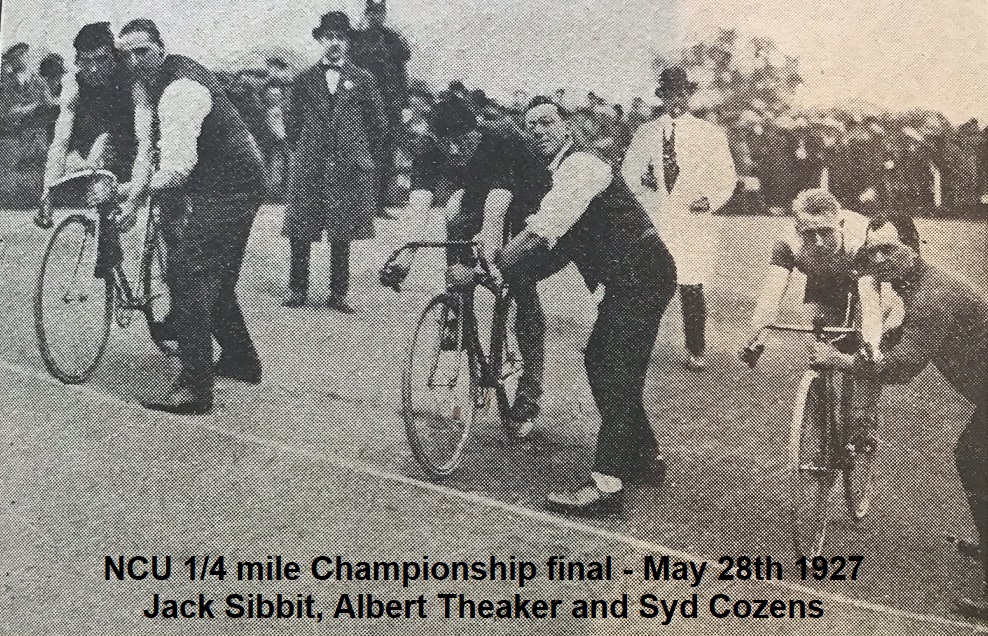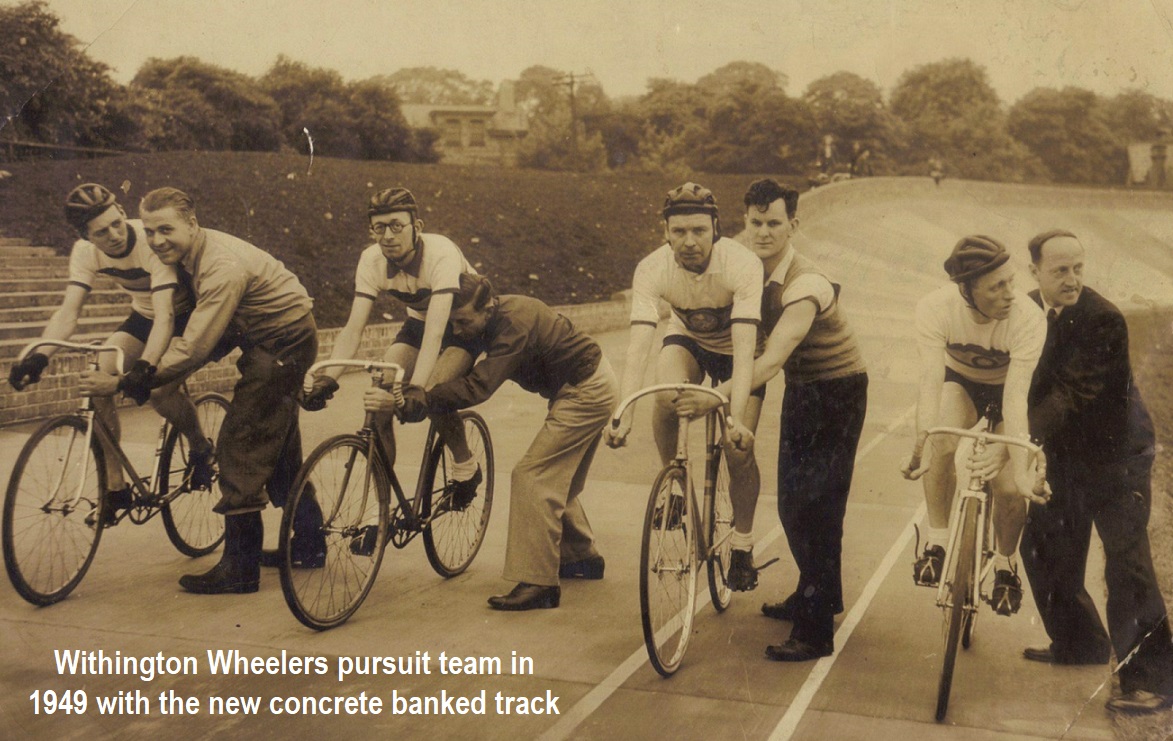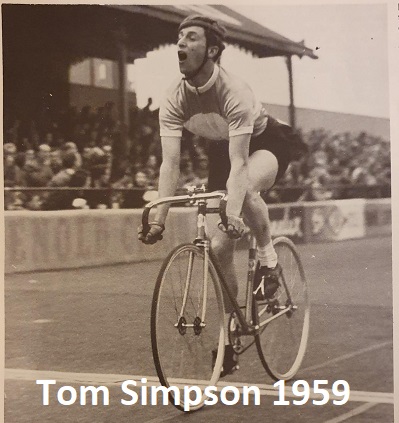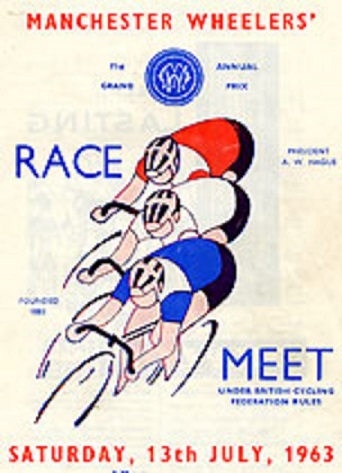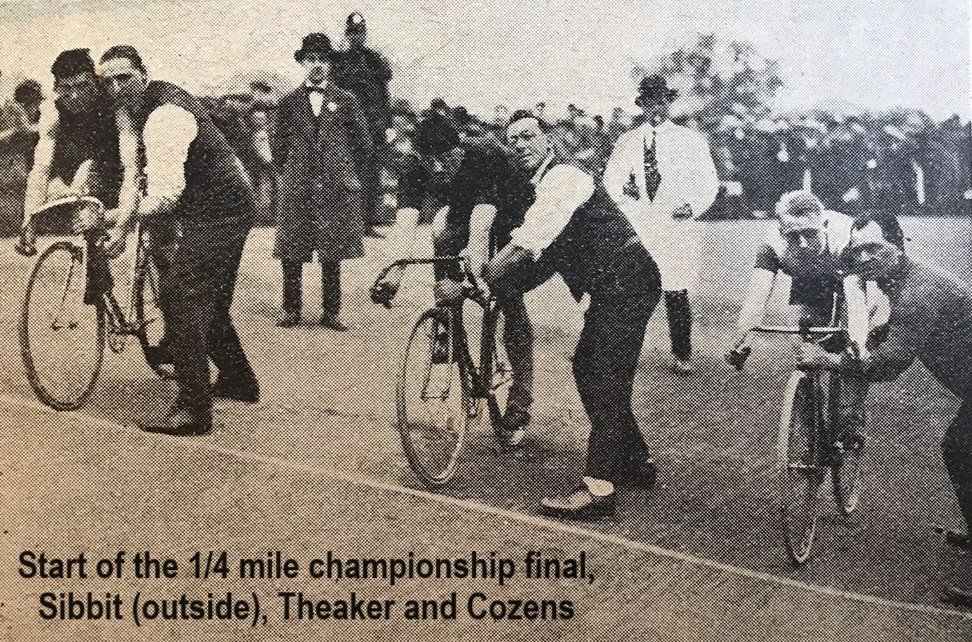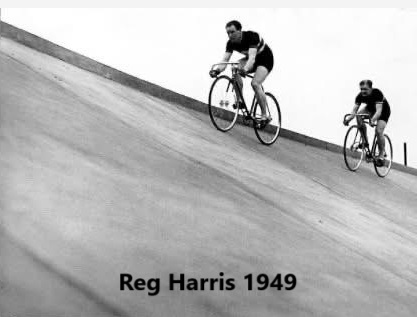

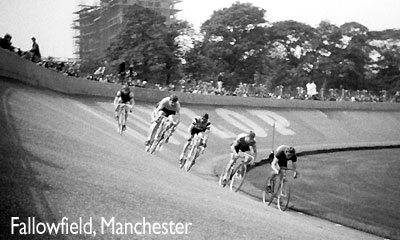
In 1893 the ground hosted the FA cup final between Everton and Wolves with a crowd of 45,067. Harold Abrahams (Chariots of Fire) competed at the stadium in 1923.
The famous Muratti Cup was presented annually to the winner of the 10 miles scratch race in the Wheeler's July track meet. The original trophy was a silver bowl valued at 100 guineas presented by DB Muratti & Sons cigarette makers. This was first raced for in the 1899 and the Muratti was won outright in 1903. The second Muratti was a gold vase. The other Wheelers events were the Easter Monday and Whitsun meets and the Police Sports meet. There was also a Tuesday night league which attracted top riders from all around the region.
Fallowfield attracted all the top riders for well over 50 years. In the 1920's local butchers son Jack Sibbit was the hero of Fallowfield, Sibbit won a silver medal in the 1928 Olympics and was national tandem sprint champion 12 times with Dennis Horn.
The stadium hosted the 1919 National Championships and the 1934 British Empire Games cycle events.
Fallowfield was rebuilt with its distinctive red concrete track in 1949. The new track measured 510.39 yards, it was 20-22 ft wide and had 30° bankings which were considered quite steep at the time.
Fallowfield was the home track of Reg Harris and he won his first event there in the 1930's. Harris was World amateur and professional sprint champion and rode as a professional for many years before retiring in 1957. This video shows Reg Harris at Fallowfield in 1951.
Reg Harris made a comeback in 1974 at the age of 54 and won the National Sprint Championship. An action statue of Reg is in the Manchester Velodrome.
Top riders were competing at Fallowfield in the 1940's, Tommy Godwin won the Muratti, Cyril Cartwright dominated the pursuit and Reg Harris won the Grand Prix of Manchester. In 1956 Tom Simpson rode there as an 18 year old and reached the final of the National Pursuit Championship. World and National champions competed at Fallowfield through the 1960's and 70's until its closure.
In 1955, the stadium was in a poor state and Reg Harris bought it and renamed it the Reg Harris Stadium. In the early 1960's the stadium was sold to Manchester University and the pitch was used for student matches.
In 1973, a track restoration fund was launched. During the winter of 1974-75, Fallowfield was re-surfaced with Estercrete**, at a cost of £16,000, which was paid for by Sports Council Grants and a sponsored bike ride. The track re-opened on April 19th 1975 with class riders such as Reg Harris, Ian Hallam, Mick Bennett, Gary Wiggins and Gordon Singleton.
In April 1976, the track was declared unfit for racing by the British Cycling Federation because the surface had broken up, and the track was not used again. The track was eventually demolished in 1994 and the land was used by Manchester University to build Richmond Park student halls of residence.
** Estercrete was a synthetic compound of Portland cement and polyester resin, which was developed by Associated Portland Cement Manufacturers in 1964.

